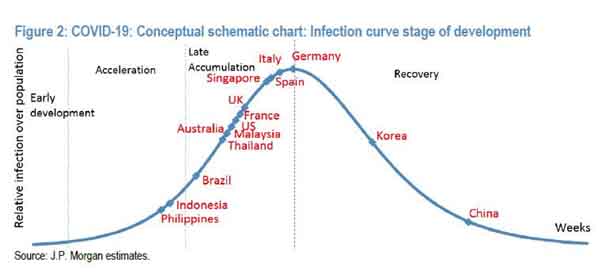To Be Or Not To Be — Part II: Hierarchy of Metrics
For us to be, we must know who “we” are. I address this in my previous writing in this series, To Be Or Not To Be.
Once we know who “we” are, when facing a problem like COVID-19 the next phase is to determine how to get to a robust answer, in other words to determine the metrics by which proposed answers can be evaluated. In System Engineering there are four to five milestones when the developing solution to a problem will be engaged through questions asked in order to evaluate the best path forward. The “best” means the lowest life cycle cost while at the same time the most effective solution as measured relative to the prescribed mission the solution will be applied to, to solve the problem.
From above it is clear that the token of “we” is important because “we” as an organization determine the mission requirements. If there is no “we,” there cannot be a mission, hence success is not measurable because the solution cannot even be decided upon during the prescribed milestones.
However, if one has no knowledge of System Engineering despite being the President of a country, the probable alternative is to limit primary biases in order to reduce negative influences on the as yet unknown solutions. These biases typically are:
- Over-optimism
- Confirmation bias
- Narrow framing
- Groupthink
Quoting from a little booklet called “Organizational Techniques”:
A simple approach for getting to a more robust answer in advance of the facts of the proposal being known and discussed, the decision makers agree on the criteria they would require to be true, in order for the decision to be made. This allows for a more objective development of targets and avoids ‘fitting the criteria around the proposal’ once the facts are known and numbers are in.
It is clear that the metrics to lift the COVID-19 lockdown are not even on the table at this stage. Practically, medical organizations will be busy developing a solution(s) to a virus, but who is going to decide which solution to use, how much to pay for it and how to implement it.
It is obvious that multiple organizations are involved in this effort, meaning these organizations should understand their position in the “we” hierarchy. If there is no control, there will be no coordination resulting in fairly chaotic trumpeting of solutions to a bewildered crowd, which is what is happening today for all to see.
In a System Engineering scenario participating organizations are classed from to Levels 1 to 6 with six being the highest level. Above that you might get “client/user” levels from Level 7 to 9. This excludes politicians which on their own would easily add another three levels 10 to 12. (This should be confirmed of course and politicians should be trained accordingly).
What the above indicate is that if a President is at Level 12, then the next level only needs two people. The first must manage the problem, while the second manages the solution. The current situation with all “task teams” is that they only have one Task Team or “Disaster Council” meaning they skip Level 11 which is visible in that they produce single graphs such as this;
Or, they produce one plan such as this one called the “Smart” Lockdown. The smart lockdown is comprised of four stages:
- Red: Stage 4 (hard lockdown)
- Orange: Stage 3 (soft lockdown)
- Yellow: Stage 2 (soft open)
- Green: Stage 1 (open)
It proposes a single scaled approach (up and down) to both locking and unlocking as circumstances “require” for the foreseeable future. They even admit it to being a similar approach used for managing power-outages, which it can never be.
Here is an example of the virus development problem management without the solution part:
Stage 1: Preparation, including community education, establishing lab capacity and surveillance of the virus.
Stage2: Primary prevention, including social distancing and hand-washing, closing schools, reducing gatherings, and closing borders and international travel.
Stage 3: Lockdown
Stage 4: Active case-finding, a unique measure in South Africa, where healthcare workers are being sent out to test vulnerable communities.
Stage 5: Finding hotspots, including surveillance and interventions, monitoring of new cases and other outbreak investigations.
Stage 6: Medical care for the peak, including managing case load capacity, healthcare staff exposure and infection, building field hospitals and expanding ICU and ventilator numbers.
Stage 7: Dealing with the Aftermath, including expanding burial capacity, regulating funerals, and managing the psychological and social impact of the epidemic.
Stage 8: Ongoing vigilance – keeping one step ahead of the virus and infections.
An all-round silver bullet rarely works and honest management consultants would rather refer to shooting many small bullets before lobbing artillery because that is by definition overly expensive. If one looks at these curves and plans then it becomes incomprehensible that the Virus “Recovery” curve can complement its “development” because if Malaria is any reference, then virus deaths will just become part of statistics, the REAL question is when.
In the case of malaria 400,000 deaths per year are just “statistics” and Corona only killed 120, 000 to date. Therefor it would make sense thinking that in order to recover (this time) humans (and especially people like Bill Gates) will have to face the reality that it is okay for the “I” to die.
Tags: covid-19, crisis management











